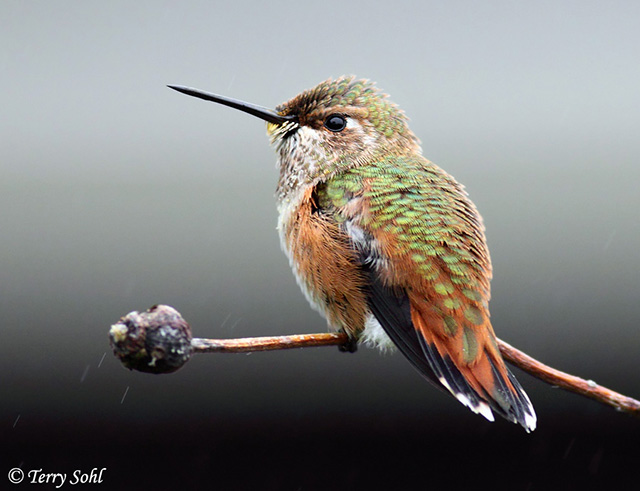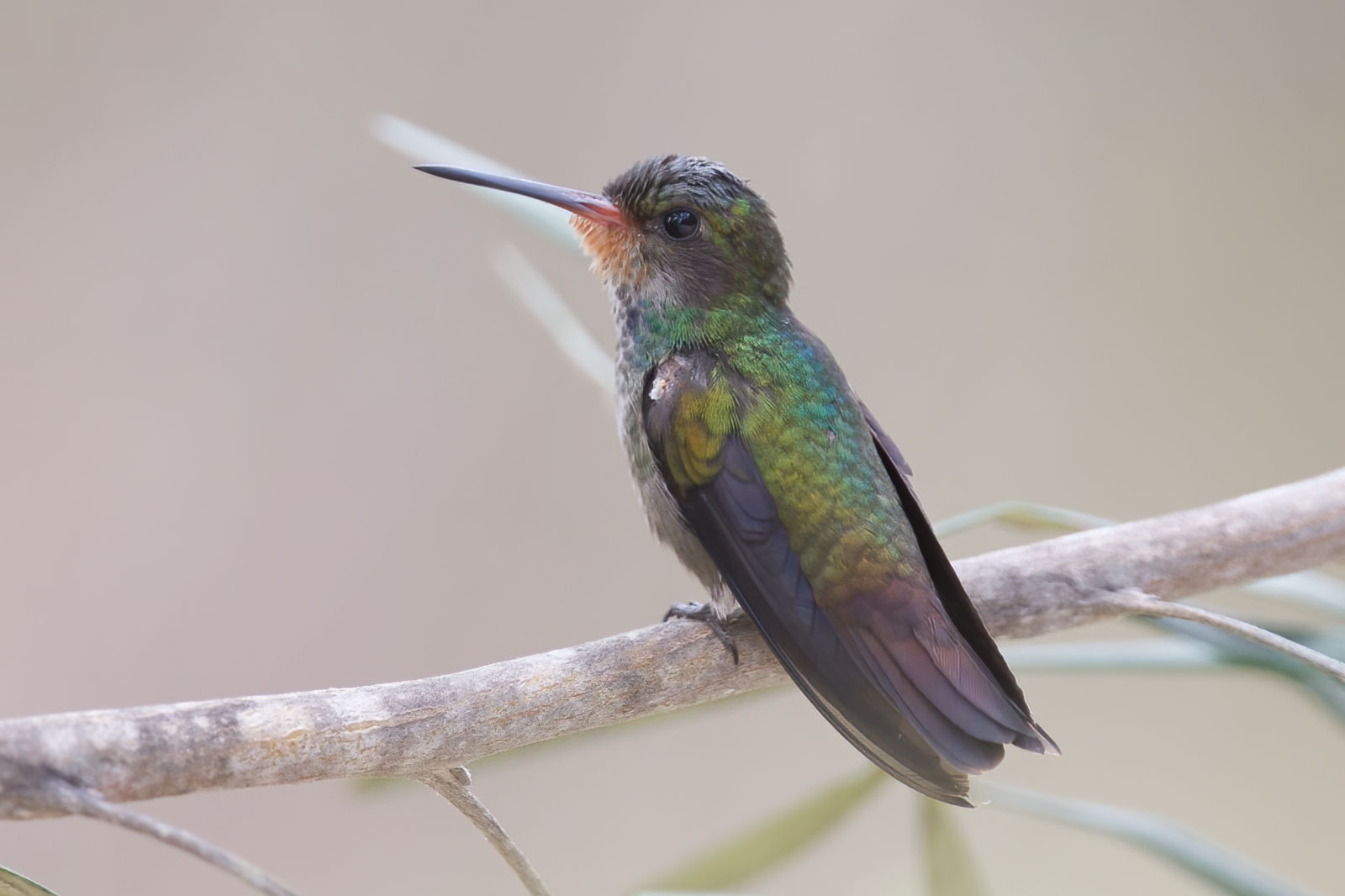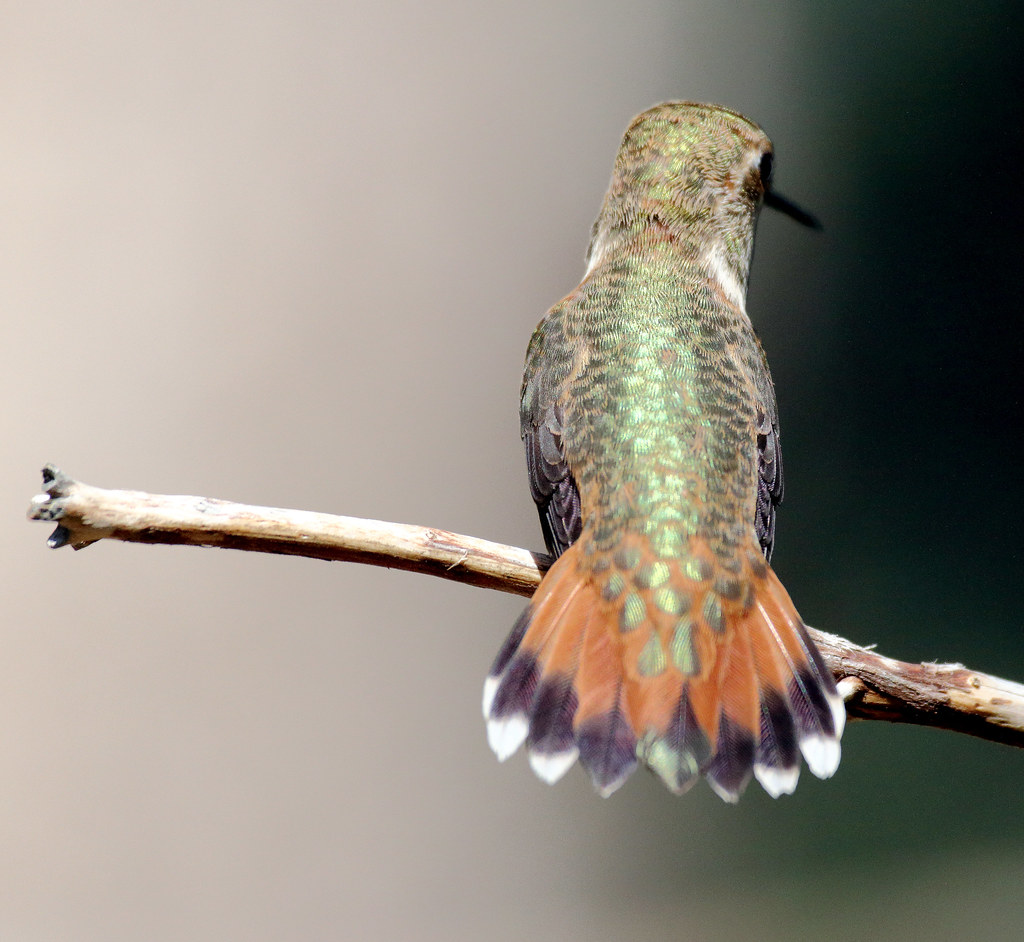

For photos and descriptions of these birds, please see the links from Vagrant & Winter Hummingbird Banding. More than five dozen Rufous have been banded in the Carolinas through Operation RubyThroat, and two were captured at the project's home base at Hilton Pond Center for Piedmont Natural History in York, South Carolina.

Below are some tips to help you identify Rufous Hummingbirds. Nonetheless, it has been documented over the past century or so in the eastern U.S.-during fall and winter in fact, its numbers in the East have increased dramatically since about 1990, and there are even a few summer records-including one in North Carolina. A Rufous Hummingbird is a fun bird to see while bird watching. Rufous Hummingbird Selasphorus rufus Sign in to see your badges Identification POWERED BY MERLIN Listen +2 more audio recordings Adult males are almost entirely orange with bright white chest and some green on the back (can be solid green like Allen's Hummingbird). It is one of nine species in the genus Selasphorus. These birds are known for their extraordinary flight skills, flying 2,000 mi (3,200 km) during their migratory transits. and western Canada, and typically winters in central Mexico. The rufous hummingbird ( Selasphorus rufus) is a small hummingbird, about 8 cm (3.1 in) long with a long, straight and slender bill. The Rufous Hummingbird has the longest migration route of all North American hummingbirds.Selasphorus rufus The Rufous Hummingbird, Selasphorus rufus, breeds in southern Alaska, the northwestern U.S. In another three weeks, they’ll be ready to fly! Did You Know? Hummingbirds can be very territorial of their feeders and nest areas so be prepared to be dive-bombed if you get too close! They usually lay two, white eggs which hatch in about 15-17 days. Rufous Hummingbird’s nests consist of a cup of mosses, plant fibers and spider webs, the outside covered with lichens, and if often placed in a tree, shrub or vine. She seems feisty though, chasing off other hummers continuously. She was very puffed up and sat at the feeder without feeding for a good part of the day. The Rufous Hummingbird is a tiny hummingbird that is very agile in flight, even when compared to other hummingbirds. Hang a bunch of different ones and see who stops in for a visit. Two days ago I noticed a female Allens or Rufous hummingbird seemed to be acting strange. Hummingbird feeders add great color and fun to your backyard in their various shapes, sizes and materials. The back of the adult male Rufous Hummingbird is cinnamon-colored (rufous), sometimes spangled with green, and rarely more than half green. We carry a large and diverse stock – beautiful, functional or whimsical, we’ve got you covered. Hummingbirds love sugar, the color red and are attracted to brightly colored hummingbird feeders. Unlike most birds who may prefer different types of seed, hummingbirds like one thing and one thing only-Hummer Sugar! Wild Bird Center’s Pure Hummer Sugar is the perfect balance of sweetness, sure to attract these beautiful and tiny birds to your yard. Popular in backyards with hummingbird feeders, look for this irridescent bird and listen for the buzz of their tiny wings as they stop for a drink. Unlike some male birds, the male Roufus does not provide any support in raising the young. They will hover over or directly in front of the flower as they pull in the nectar with their long, thin beak and tongue.

Rufous Hummingbirds will reuse old nests. The nest measures 2' across and is 1' deep, it is composed of herbaceous matter, spider silk, and moss. Rufous Hummingbirds are often spotted in forest clearings and meadows visiting flowers and drinking their sweet nectar. Rufous Hummingbird in nest (photo credit: Jon Heale / USFWS) Female Rufous Hummingbirds build their nest on top of a well-camouflaged tree or shrub branch. Rufous Hummingbirds breed from south Alaska through British Columbia, Alberta, Washington, Idaho and western Montana to Oregon. Females have spotted cheeks and orange-buff wash on sides. Medium in size, the Rufous Hummingbird’s presence is revealed by the loud hum of its wings and its jewel-like, copper-red throat.


 0 kommentar(er)
0 kommentar(er)
